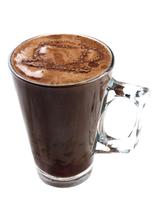Description of Burundian Coffee Bean Flavor, characteristics of Grinding degree, quality and taste treatment method
Introduction to the characteristics of Burundian coffee flavor description
Generally speaking, fire-roasted aroma, caramel and color are produced in the caramelization reaction, as well as other aromatic substances such as maltol, Cyclotene, furan and so on. These compounds can also be found in red wine, fruit juices, cream and other foods.
However, if caramel is too much in the baking process is not a good thing, but will cause carbonization, making the coffee dry and choking. If the caramelization is not enough, it will make the aroma monotonous and lack of layers. Burundi Burundi
Coffee came to Burundi during the Belgian colonial period in the 1920s. Since 1933, each farmer has been required to take care of at least 50 coffee trees. When Burundi became independent in 1962, coffee production began to go private; in 1972, it became state-run with the change of political situation; and since 1991, it has gradually returned to private hands.
Coffee taste: high-quality coffee from Burundi has a complex berry flavor and a delicious juicy mouth.

Burundian coffee was first brought in by the Germans in the 1900s; they found that bourbon was the most suitable for growing in the local climate, which is usually a "tropical" plateau climate with a very large temperature difference between day and night. However, due to the suspension of investment in coffee research, bourbon has become the only coffee variety left in the country and has been treated with "full washing".
The development of boutique coffee needs continuous breakthrough and innovation. In 2014, Long Miles Coffee Project (LMCP) began to use sun treatment and honey treatment for their coffee, which made professional coffee cup testers overjoyed at the taste of the coffee. According to Miss Gu Qinru, head of Latorre & Dutch Coffee Asia, "usually we can drink citrus and plum flavors in washed Burundian coffee. And this is our first cup of Burundian coffee treated with sun and honey. Its flavor turns into more complex strawberries, grapes and tropical fruits. It seems that the way it is handled is crucial to the taste of the coffee.
Burundi has the most diverse and successful coffee industry in the world, and has its own characteristics. Coffee in this country was introduced by Belgian colonists in 1930 and is now grown only on small farms. Unfortunately, many of these farms are on the border with war-torn Rwanda, putting pressure on coffee production. Almost all coffee produced in Burundi is Arabian coffee beans, while coffee trees in Ngozi are planted at an altitude of more than 1200 meters. Burundian coffee has a rich aroma and excellent acidity, and most of its products are exported to the United States, Germany, Finland and Japan.
Important Notice :
前街咖啡 FrontStreet Coffee has moved to new addredd:
FrontStreet Coffee Address: 315,Donghua East Road,GuangZhou
Tel:020 38364473
- Prev

Introduction to the flavor characteristics and taste varieties of Panamanian coffee beans
Manor: Lelida 10 Lerlda Estate Lot10 treatment: White honey treatment Honey varieties: Kaduai Catuai score and cup test CuppingScore:87 lime,floral coconut,clean,sparkling,mediumbody lime, coconut flower scent, clean, lively acid, medium alcohol thickness unique Colombian red wine treatment method Colombia
- Next

Introduction to the Flavor description and Grinding degree of Diamond Hill Pocket Coffee in Bogut Jade Manor, Panama
Panamanian Coffee in 1823, the Central American Federal Republic, composed of Guatemala, El Salvador, Honduras, Nicaragua and Costa Rica, formally submitted a request to the United States for assistance in the construction of the canal. In June of the following year, Simon Bolivar, the father of Latin American freedom, formally put on the agenda at the international conference held by Simon Bolivar, the father of Latin American freedom. In the proposed four
Related
- Detailed explanation of Jadeite planting Land in Panamanian Jadeite Manor introduction to the grading system of Jadeite competitive bidding, Red bid, Green bid and Rose Summer
- Story of Coffee planting in Brenka region of Costa Rica Stonehenge Manor anaerobic heavy honey treatment of flavor mouth
- What's on the barrel of Blue Mountain Coffee beans?
- Can American coffee also pull flowers? How to use hot American style to pull out a good-looking pattern?
- Can you make a cold extract with coffee beans? What is the right proportion for cold-extracted coffee formula?
- Indonesian PWN Gold Mandrine Coffee Origin Features Flavor How to Chong? Mandolin coffee is American.
- A brief introduction to the flavor characteristics of Brazilian yellow bourbon coffee beans
- What is the effect of different water quality on the flavor of cold-extracted coffee? What kind of water is best for brewing coffee?
- Why do you think of Rose Summer whenever you mention Panamanian coffee?
- Introduction to the characteristics of authentic blue mountain coffee bean producing areas? What is the CIB Coffee Authority in Jamaica?

